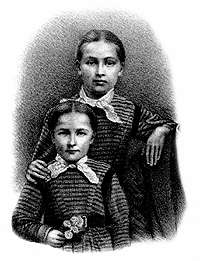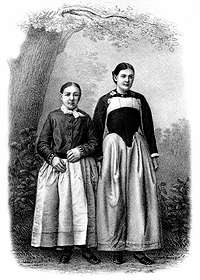Theodor Kocher
Article

Emil Theodor Kocher
by Bertil Hamberger
This article was published on 23 July 1997.
Theodor Kocher was born in Berne, Switzerland in 1841. He finished his medical studies in 1865 and went into surgery, where he had teachers like Demme, Lycke, Billroth and Langenbeck. In 1872, only 31 years old he was appointed professor of Surgery and Head of the University Clinic in Berne. He held this position until retirement. He was one of the first surgeons to apply the aseptic principles of Lister. Kocher was very early scientifically active and published a large number of experimental and clinical work in various surgical fields. He had a particular interest in infections, especially how to prevent surgical infections. He made early and important contributions to the condition of osteomyelitis and its relation
Contributions to General Surgery
Theodor Kocher made tremendous contributions to a wide variety of surgical fields including hernias, abdominal surgery from all parts of the gastro-intestinal tract as well as various orthopedic fields including hereditary malformations and fracture treatment. Also, new surgical areas were covered by Kocher who wrote scientific articles on traumatic epilepsy, brain damages and trepanation. In this field he cooperated with Harvey Cushing, particularly on the effects of increased intra-cranial pressure. A special contribution known to all surgeons today is Kocher’s study of the mobilization of duodenum for exploration of the inferior caval vein and the head of the pancreas, today called the “Kocher mobilization”. He published this study in 1902. His surgical textbook on procedures was published in many different languages including German, English, French, Spanish, Russian and Japanese. In this textbook he described the abdominal and orthopedic surgery with a general principle of atraumatic technique. There he also made a foundation for the new ideas of how to select surgical incisions.
One of Kocher’s contributions was to report his statistics regularly. This has made it possible to follow the development of the results which improved so tremendously at the end of 19th century.
Prize Awarded Work
Theodor Kocher received the Nobel Prize in 1909 for his work on the physiology, pathology and surgery of the thyroid gland. In the years around 1850 thyroid surgery was performed on vital indications only. The mortality was often high, up to 40%. The reason for death was usually uncontrollable bleeding or infection. With this background a few European surgeons, including Kocher and Billroth, started to improve surgery and report their results. In 1883 Kocher’s mortality was 13%.
Also, at this time other complications were recognized, particularly damage to the recurrent laryngeal nerve, causing hoarseness. It was soon known that it was important to preserve this nerve. The complications of tetany and hypoparathyroidism were not understood. However, Kocher in contrast to Billroth had a very neat and precise operating technique and worked in a relatively bloodless field. Probably because of this he had less problems with postoperative tetany. Also well-known to all thyroid surgeons is the “Kocher incision”, a transverse, slightly curved incision about 2 cm above the sternoclavicular joints.
Kocher’s studies on one of his patients, who was operated on in 1874, led to an early discovery. This eleven year old girl had a successful removal of her thyroid, but afterwards she became very tired, showed no signs of initiative and became cretinoid. She remained small and had an ugly and idiotic appearance in contrast to her sister.

The Kocher patient together with her sister before the operation. The patient was then taller than her little sister.
Photo: from Kocher, T. Arch Klin Chir 29:254-337,1883
 |
|
Nine years after the operation she stopped growing and became cretinoid. |
This prompted Kocher to reinvestigate all his thyroid patients. Almost all of them, particularly the children, had evident symptoms of hypothyroidism which he named “Cachexia Strumipriva”. However, at this time Kocher did not understand that this was due to the removal of the thyroid gland but ascribed it to tracheal injury. These data made Kocher decide not to remove the whole gland in his future patients. After description of the myxedema condition, transplantation and injection of extracts of thyroid tissue was tried. In 1892 also oral therapy was introduced.
The number of thyroid operations increased rapidly and 2,000 operations had been performed by Kocher in 1901. When he died in 1917 more than 7,000 thyroid operations had been done in his clinic; three quarters by himself. The mortality decreased steadily from 14% in 1884 to 2.4% in 1889 and 0.18% in 1898.
Concluding Remarks
Theodor Kocher was a world leader in the surgical revolution in the last third of the nineteenth century. His major discoveries were in the fields of physiology and pathology of the thyroid gland. The contributions of Theodor Kocher still today have a great impact on thyroid surgery.
Reference
Richard B. Welbourn: The history of endocrine surgery. Praegel, New York 1990.
First published 23 July 1997
Nobel Prizes and laureates
Six prizes were awarded for achievements that have conferred the greatest benefit to humankind. The 12 laureates' work and discoveries range from proteins' structures and machine learning to fighting for a world free of nuclear weapons.
See them all presented here.
